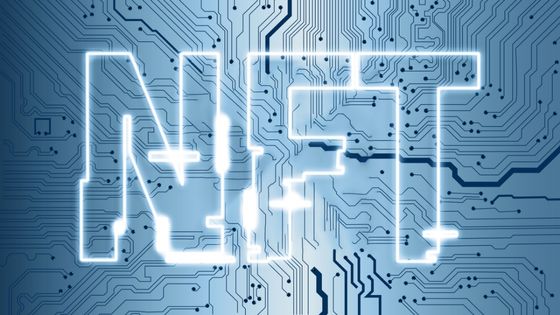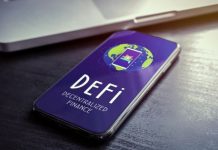Two aspects of the crypto space are – NFTs and DeFi. NFT, or non-fungible token, is a type of encrypted asset that cannot be copied or replaced. Due to the recent headlines about NFT projects selling for incredible prices, they have become a phenomenal topic. Meanwhile, DeFi, or Decentralized Finance, refers to blockchain platforms that provide financial products and services to cryptocurrency investors without the supervision of banks or financial institutions. These platforms enable anyone with an internet connection to borrow, lend or trade crypto assets in minutes without the endorsement of a centralized authority.


DeFi apps are simple to understand in the context of cryptocurrencies like Bitcoin or Ethereum. However, the fact that NFTs cannot be easily traded can confuse some people because they cannot be divided. For example, how to get involved? The answer is NFT lending. Valuable NFTs can be used as collateral to get a loan, just like a house, car, boat, or stock.
Merging DeFi and NFT opens a whole new economic model. In this guide, we’ll explore how NFT lending works and take a look at the progress that some existing platforms are making in the NFT/DeFi space.
What Is NFT Lending?
NFT lending is provided by DeFi platforms. They allow NFT owners to mortgage their NFT artwork or collectibles in exchange for cryptocurrency or fiat currency. Many NFTs in the market are illiquid, and some DeFi projects have discovered that there is a growing need to improve NFT liquidity using solutions such as loans.
Non-fungible tokens (NFTs) can represent ownership of a variety of real-world items and digital assets, from virtual real estate and collectible cards, to digital artwork and avatars. The biggest selling point of NFTs is their non-fungibility (non-homogeneity), which basically means that they cannot be divided and cannot be copied.
By contrast, (fungible) cryptocurrencies are divisible, meaning that instead of buying a whole bitcoin, investors can buy fractions of it at a time. In contrast, all NFTs have a unique digital identifier, ensuring they cannot be copied or split. An original NFT can be easily verified on the blockchain.
Beeple’s NFT artwork broke the previous record when it sold for $69,346,250 in March 2021.
In many cases, an NFT simply points to the location of a digital file, whether it’s an audio clip, artwork, GIF, or video. The most prominent example that made headlines last year was the NFT artwork Everydays: The First 5,000 Days of Digital Artist Beeple. The work was sold for US$69 million at Christie’s auction house, which set off an NFT boom in March 2021.
The first batch of NFTs featuring a clip of Kevin Durant dunking a dunk sold for nearly $20,000. Image credit: NBA Top Shot.
NFTs have no fungibility making it easy for establishing the uniqueness of an asset. It creates unique classes of digital assets, similar to traditional art collections. It includes rare physical collectibles also.
However, heterogeneity is not without its flaws. Most notably, it limits what investors can do with their NFTs, which makes NFTs illiquid. Once an investor has acquired an NFT, the standard option for realizing a profit is to sell it as its value increases.
This is the role of NFT lending, which is implemented according to DeFi. NFT-backed lending and fractional NFT ownership through DeFi protocols are emerging as a way to address NFT illiquidity. These innovations create a marketplace where NFT owners can stake their NFTs in exchange for cryptocurrency or fiat.
NFT based lending allows holders to extract funds using their digital assets as collateral. That loan can then be used to buy more NFTs, buy tokens that can be converted to fiat, or buy other tokens that can be deployed to DeFi protocols for yield.
In 2021, the sales of NFT artworks will exceed 2.1 billion US dollars. Image credit: NonFungible.
DeFi has made great strides in the cryptocurrency market, and its applications include applications for lending, leasing, staking, and margin trading without involving banks or centralized institutions. DeFi mechanisms such as fractional assets, collateralized lending, NFT staking, and others provide new ways for collectors to leverage their NFTs rather than passive buy-and-hold investment strategies.
DeFi loans are executed by smart contracts, which serve as the basis for transparent, open and self-executing lending solutions that do not require oversight. They perform tasks that are defined and users access them through a simple interface.
However, the smart contracts used by DeFi platforms are not without flaws. Attackers can take advantage of the market when borrowing money, causing the value of the borrowed tokens to plummet, then buy the tokens back cheaply, repay the loan — and pocket the difference.
Despite these hurdles, NFT lending platforms are slowly making its mark in the mainstream cryptocurrency market. The NFT ecosystem is currently underdeveloped, perhaps due to the stage of development and market size, but increasing practices in lending, staking, and fractional ownership are driving the industry’s continued growth.
How does NFT lending work?
Platforms supporting NFT lending allow holders to borrow funds without an intermediary. Borrowers are expected to receive 50% of the NFT value as the loan amount, with interest rates ranging from 20% to 80%, depending on the popularity.
DeFi protocols are simple, transparent, and efficient compared to traditional lending institutions. They don’t require any centralized agency to check your credit score, verify your real identity, and spend days or weeks reviewing your application.
DeFi platforms give users full control over their funds through smart contracts. Assets are used as collateral for yielding secured smart contracts. They are impartial, automated third-party processes to complete the entire lending process.
Lenders assess the fair value of collateral, typically by looking at the asset’s past performance, sales history, or NFT-like floor prices. The floor price refers to the lowest quotation for a specific series of NFTs. Once the terms are agreed upon, the NFT is transferred from the borrower’s wallet into an escrow account, and the loan is facilitated by a smart contract.
In theory, it sounds very simple and crisp, but the market is not completely risk-free. In case, the borrower couldn’t pay the loan and interest within tenure. Lenders may also not accept new NFT projects as collateral due to price volatility, as they could end up losing money if the market doesn’t have any demand for defaulted NFTs.
What is NFT Fragmentation?
The very core features of NFTs are they are completely unique, indivisible and verifiable, guaranteeing absolute ownership. This stands by single ownership control on NFT.
NFT owners can use sharding to mint tokenized shard NFTs. The NFT price of some is very high, while in that case fragmentation is a convenient way for several parties to each invest a small amount of money to obtain partial ownership of the asset. An NFT of an ERC-721 token can be divided into multiple ERC20 tokens, and each ERC20 token can be sold separately at a more affordable price.
Fragmentation opens up new vistas for the NFT market and brings many benefits, including:
Enhances mobility . The non-homogeneity of NFT makes it illiquid. For example, investors selling high-priced NFTs may have to wait a long time to attract whales who can afford to buy the asset. Splitting one ERC-721 token into multiple ERC20 tokens can enhance the liquidity of assets and make it easier to find interested investors.
Price discovery. As liquidity increases, so does price discovery. One of the biggest benefits of splitting is that it helps investors assess the market value of assets more quickly.
Easy to monetize. Fragmented NFTs do have the potential in the markets for digital artwork they can be monetized easily as well, collectibles, game assets, domain names, music, and real estate. In all these areas, NFT creators, artists, and property owners can use fragmentation to quickly sell their assets to a wider market, including small and medium investors.
Are NFT loans a good investment?
Recently, the market grew exponentially for NFTs. Thanks to platforms like Arcade, NFTfi, and Nexo, decentralized NFT lending is opening up new opportunities for the growth of this nascent industry and slowly gaining mainstream attention.
NFT lending is addressing the illiquidity most digital collectibles face. At the same time, they enable NFT holders to increase the liquidity of their assets, rather than engage in simple strategies of buying and holding.
The new market also grabs the attention of institutional investors. In December 2021, Arcade announced they had raised $15 million in Series A funding from investors including Pantera Capital to further develop its platform.
However, these beautiful concepts have their own kind of shortcomings. Besides the environmental impact of NFT minting, one of the other major concerns is high gas fees.
Mounting NFTs on the Ethereum network requires a fee, and users pay miners to validate transactions, thereby adding them to the blockchain. Maybe it’s simple, but gas fees are volatile. At a congested network, fees go up, and customers suffer.
The good news is that Ethereum is actively working on solving this problem, and in 2022 Ethereum will switch to a proof-of-stake model (POS). This change will not only solve Ethereum’s energy consumption and carbon emissions but also expand the network and increase its transaction processing capacity. It’s expected to ease the shortcomings.
While no one knows what the next trend in the NFT market will be, it can be argued that NFT lending will continue to offer good investment opportunities in 2022 and beyond.
Opportunities for NFT Lending
NFT lending is the only gateway into the NFT/DeFi. They are potential enough to create exciting revenue streams. The core goal of NFT lending platforms is to increase the liquidity of NFTs, providing users with access to capital for use in other projects and services.
















